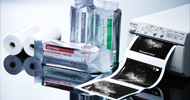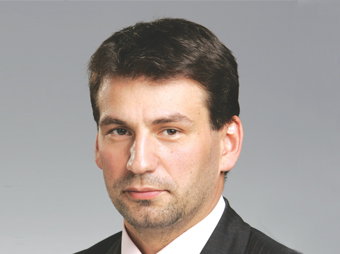
“Technology as advancements in the field of dentistry have aided the development of dental fixtures with no pain and easier surgical techniques”. By Shally Makin, Elets News Network (ENN)
 Smile makeover is a rage these days among the youngsters. Despite the cost and inconvenience as most cosmetic procedures are not covered by dental insurance. The early composite resins tended to stain, chip and change color over time and thus was a serious drawback. New composite resins are much better. Porcelain veneers cover the entire front of the tooth. Computer imaging, another useful technique, allows dentists to create virtual restorations on a computer screen. The most popular cosmetic dental procedures include bonding front teeth, whitening the teeth and using tooth-colored fillings, which blend with the natural color of teeth.
Smile makeover is a rage these days among the youngsters. Despite the cost and inconvenience as most cosmetic procedures are not covered by dental insurance. The early composite resins tended to stain, chip and change color over time and thus was a serious drawback. New composite resins are much better. Porcelain veneers cover the entire front of the tooth. Computer imaging, another useful technique, allows dentists to create virtual restorations on a computer screen. The most popular cosmetic dental procedures include bonding front teeth, whitening the teeth and using tooth-colored fillings, which blend with the natural color of teeth.

Dental adhesives also have improved. Cosmetic dentistry can improve ones self image, particularly if the teeth are damaged or discolored. Even simple procedures such as bleaching or bonding can be real confidenceboosters. Smartphones and iPhone allows scheduling of appointments. Laser technology has a range of benefits, including improved healing, reduced risk of infection, improved accuracy, reduced pain and reduced treatment time. Diagnodent is a new dental instrument, which enables dentists to detect early signs of decay.
Technology at the Forefront
Dr Sameer Sachdev, Cosmetic Dentist, Dr Sachdevs Dental Clinic believes, In our field constant upgradation with technology is the key to success. With the help of technology, we are able to help the patients better. They get better, efficient and more effective treatment.
Nanodentistry is a branch of dentistry that employs nanotechnology for precise and better results along with maintenance of oral health by use of nanomaterials, nanorobotics and nanomedicine. Nucalm is a revolutionary new treatment, which has been developed to help patients with dental anxiety or dental phobia. Nucalm treatment involves chewing on tablets, which are designed to counteract the effects of the release of adrenaline, which often causes a rush of excitement and anxiety. The final stage involves the patient wearing black out glasses and earphones.
Cerec is a technology, which enables dentists to design and fabricate dental restorations on site. Cerec can be used to produce new onlays, inlays, crowns and veneers by using digital camera images; then be converted into a Computerised 3D model of the tooth. Many people may not realise that CT scanners are also used in modern dentistry. Digital X-rays are relatively new but an increasing number of dentists are switching to digital machines, as they have a range of benefits. The images can then be stored on the computer, which will reduce the amount of paper used by dentists and waiting time. iTero is a scanner, which produces exact replica images of the mouth in a matter of seconds.
Dr Latika Dhawan, Consultant Orthodontic Department, Skin and Smile, says, Ceramic veneers made primarily from high quality, very aesthetic eMax ceramic allow the dentist to change the teeth colour, shape and position to some extent. Ceramic braces are a good amalgamation of looks and good function. She adds,Lingual orthodontics or invisible braces are placed on the inner side of the teeth and are completely invisible. Invisalign, as its name suggests is another near invisible appliance to move teeth.
 Velscope is an instrument, which enables dentists to check for early signs of oral cancer. The instrument projects a blue light into the mouth. The light causes the tissue to fluorescence and healthy tissue usually gives out a bright green glow, while unhealthy or abnormal tissue gives a much duller, darker glow.
Velscope is an instrument, which enables dentists to check for early signs of oral cancer. The instrument projects a blue light into the mouth. The light causes the tissue to fluorescence and healthy tissue usually gives out a bright green glow, while unhealthy or abnormal tissue gives a much duller, darker glow.
With X-ray equipments now becoming commonplace and CT and 3D imaging scanners being quickly accepted as daily dental practice tools, it will not be long before dentists go the digital way, using new technology. Technology now makes it possible to view before-andafter images of teeth before the work even begins. The industry is also looking at innovative technologies such as DVD glasses to help ease any dental anxieties patients. Most dentists are slowly but surely getting accustomed with this change enveloping.


Gautam Khanna
utive Director, Healthcare
Business, 3M India
Technology developed at the leading universities and companies of the world now enable digital replication of the oral cavity, rendering hi-end imagery and data capture to create a virtual model of your teeth. These virtual models can then be used by sophisticated laser and CAD/CAM milling systems to create perfectly fitting teeth. An example of one such material is Zirconia, that came to being used in dental a couple of decades ago and is not fast replacing age old materials like porcelain fused to metal (PFM) due to its benefits. Lava Zirconia from 3M offers sophisticated state of the art digital crown and bridge solutions for your teeth. Ugly margins at your teeth, ill fitting crowns, and fragile teeth are a thing of the past due to this technology wave overtaking dentists.
Now its possible for your dentist to have digital images of your teeth in relation to your facial bone structure through Cone Beam CT imaging, helping you get a perfectly positioned implant and designing lasting prosthesis for your tooth.
Laser-assisted procedures allow for minimally invasive dental treatment
Dr Manisha Soni
Consultant Periodontist & Dental Surgeon,
Kokilaben Dhirubhai Ambani Hospital
Laser dentistry was developed to specifically repair decayed and damaged teeth as well as treat gums and other soft tissues. Laser dentistry uses a patented technology that combines laser energy and a gentle spray of water to perform a wide range of dental procedures. It is less traumatic to teeth and gums than conventional treatment modalities with the drill and scalpel. Dental lasers are usually divided into hard and soft-tissue lasers. Soft-tissue lasers such as diode lasers can be used for periodontal treatment and oral surgery. The diode laser is a cheaper technology and is in the affordable range, but is limited to applications on soft tissues such as gums; also as it uses a dry technique, if not used carefully can lead to charring of tissues. Laserassisted procedures allow minimally invasive dental treatment that offers many benefits to the patients, such as less pain, minimal bleeding, reduced need for stitches and faster healing.
Laser dentistry is the safest option for patients with concomitant medical conditions that require blood thinners (anticoagulants), including heart disease and stroke. In conventional treatment the risk of bleeding in cardiac patients on anticoagulant medication is very high; this is eliminated in a laser-assisted treatment as it establishes blood clotting and prevents bleeding.
Lasers are a huge practice differentiator in dentistry. Thus, lasers make it a win-win situation for the dentist, patient and the profession. The Indian Academy of Laser Dentistry is trying to promote and build awareness about laser technology in India.
Dr Sameer Sachdev
Cosmetic Dentist, Dr Sachdevs Dental Clinic
uation of resorbable membrane in treatment of human gingival isolated buccal recession is the ongoing research. Gingival recession in its localised or generalised form is an undesirable condition, which results in root exposure. The necessary improvement and standardisation are the things to be taken care of.
Evidence Based Dental Practices
Dr Ashok Dhoble, Hony. Secretary
General, Indian Dental Association
The past decade and a half has seen sweeping changes in dental technology, product and materials, in particular technical procedures that are of great clinical relevance to dentists. While the changes affect all specialisations of dentistry, there is growing interest in implants and cosmetic dentistry. Lasers, Cone-Beam Computed Tomography (CBCT), a new medical imaging technique that generates 3-D images of teeth, roots, jaw and even the skull as compared with conventional computed tomography (CT), stem cell technology, invisalign or invisible braces, air abrasion, CAD/CAM technology. The use of ozone in dentistry is gaining its place in every days dental practice and is used in almost all dental applications.
The dentists are able to follow evidence based dental practice integrating the best available evidence with clinical experience and patient preference. CAD/CAM technologies to produce different types of dental restorations, including crowns, veneers, inlays and onlays, fixed bridges, dental implant restorations and orthodontic appliances are in use today. CAD/CAM- abricated crowns and bridges are unbreakable and less expensive than traditional ones, besides being a fast process.
Research in the technological aspect of dentistry
Constant research into ways of improving oral health that leads to new technology, and new ways of treatment. The aim is to improve the quality of dental care provided in India. Stem cell research and lasers fall in this category of constant research. While global research leads the way, IDA has also set up a research foundation to promote strategic research initiative and to develop a strong infrastructure for research and to apply scientific knowledge to aid patients. IDA has been hosting World Dental Show for the past four years as its annual activity to pave the way for collaborative endeavors and investment to make the latest technologies to penetrate the expanding market in India promoting employment and income and making global brands available locally.
Apart from these, in its crusade against oral cancer, IDA has established Oral Cancer Foundation for early detection and treatment of the dreaded disease with the help of SPOT Centres (Spot and Prevent Oral Cancer Trauma). An Oral Cancer Registry exclusively to register case of oral cancer has also been launched. Tobacco Intervention Initiative (TII) Centres help tobacco de-addiction and dental surgeons are setting up these centres across the country. The SPOT and TII Centres are IDAs contribution to oral healthcare management. Child Dental Centre to prevent dental caries among children and Emergency Dental Centres to make dental care available 24 x 7 are notable contributions by IDA.
Be a part of Elets Collaborative Initiatives. Join Us for Upcoming Events and explore business opportunities. Like us on Facebook , connect with us on LinkedIn and follow us on Twitter , Instagram.














